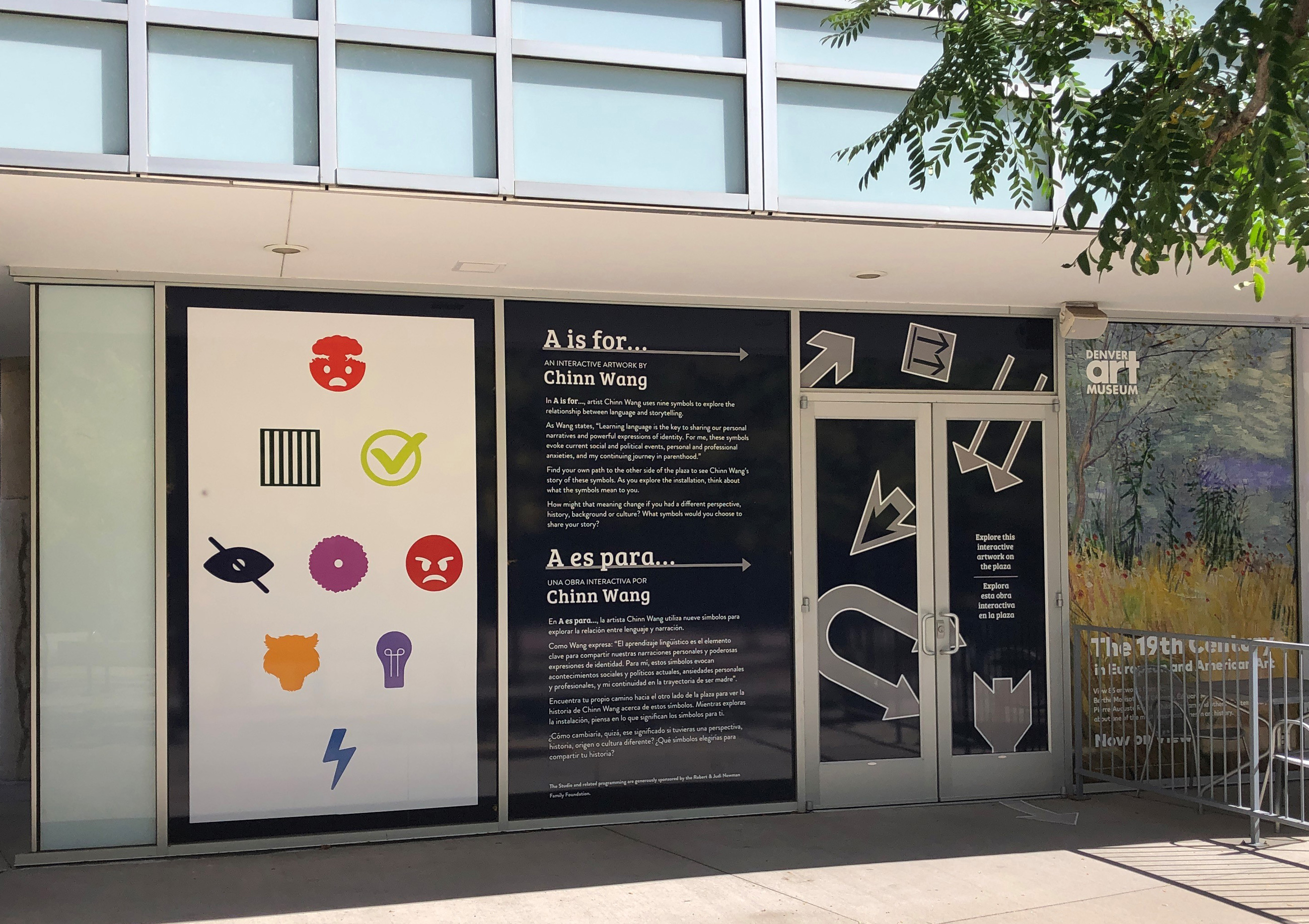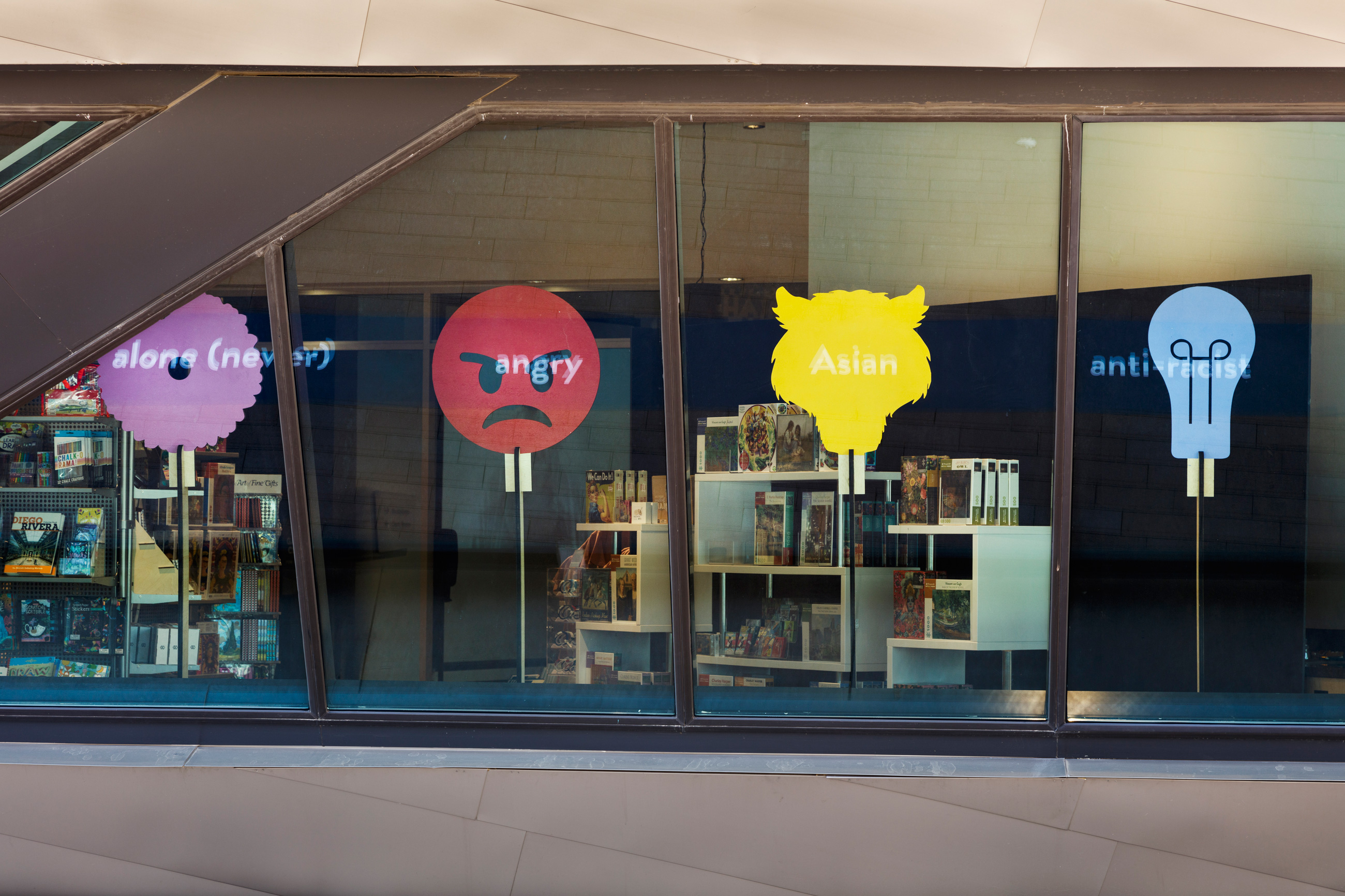Please tell us about yourself.
I am an artist based out of Boulder and Denver, Colorado. I'm originally from Columbus, Ohio—born and raised for 18 years of my life. I did my undergrad in art history and art practice at the University of California, Berkeley, and then I did my MFA in printmaking from the University of Madison in Wisconsin. I taught in Philadelphia at the Tyler School of Art and Architecture for about a year after graduate school, and then I moved to Colorado where I've been since 2012. I have a studio at TANK Studios in Denver and I also make work out of my university studios, where I teach at the University of Denver School of Art & Art History.
Learn more about how the Denver Art Museum collaborates with local creatives.
Can you tell us about your practice? What inspires your work?
I am a printmaker, but I do primarily screen-printing, but I also do a lot of installation, as well as sculptural dimensional work. I think of my work as sort of in between 2-D and 3-D work, but I always still consider my work as prints. I'm very interested in process, layering, and color. I've really been interested in optical issues and how we see things, the world, and how we experience popular culture through images. In a lot of my work I play with legibility or eligibility; what you see up close is extremely different from what you see when you are far away. I'm really interested in creating a non-passive viewing experience. I don't subscribe to the idea that there's an ideal viewing position to look at artwork. I'm kind of encouraging a sense of movement for my viewers. I believe our bodies are not static. Conceptually, I want people to not accept what they see right away. And there might be a moment of confusion or a moment of questioning when they encounter my work and they have to sort of spend some time or do some thinking, or internal questioning.
The symbols that I create and fabricate in my works helps me tell my story in ways that I can't with written language.
Tell us about your window installation and how it relates to your practice
My work is all about storytelling and narrative. So my practice has always been about history, identity, lineage, and personal narrative. I work on a lot of issues from my personal family story. My parents are from different parts of Asia. They were both born in China, but then grew up in Taiwan and Hong Kong (respectively), and came over to the United States. They raised me and my siblings in the Midwest in Columbus, Ohio, in a very middle-class, white, suburban environment. I did not think about being Chinese at all when I was growing up, and I didn't really ask a lot of questions about my parents’ history. In college, I started to think about my origins and roots. At that time, I was kind of making up a family story for myself and I was borrowing symbols and iconography from other cultures, not Chinese, as a way to talk about my family story, that I didn't know I was making up.
In 2016, I wanted to make work about the women in my life, and I want to make work about my mom, so I started going through old photo albums because I always go back to photography. I pulled all these photos of my mom from when she first came over from China to California, and it ended up leading to a whole body of work that had to do with the erasure of the immigrant experience, and the erasure of legacy. So through that process, I learned more about my family's history than ever before. That time really dialed it in for me—how important storytelling and stories are, and how special they are for the formation of one's identity.
I hope when viewers experience the piece from the plaza outside, they will literally see their own reflections, and then perhaps also see the words embedded in their own reflection, as well the color and shape from the symbols coming through the window.
What do you hope visitors will take away from your installation?
I'm really excited about the potential of a literal and metaphorical layered experience, as well as the idea that viewers could see themselves reflected with a word, and then a symbol, and have to navigate their own understanding of themselves within that “layeredness.”
I hope there is moment of disconnect and then reconnection of the viewers’ own story and how that word connects to that symbol or maybe how it doesn’t connect to that symbol. My goal was to slow down and reconfigure the understanding between language and symbol, and how each individual's experience shapes the meaning of the symbols in the piece.
Why is the relationship to symbols and language important to you?
We are surrounded by signs and symbols. Our world is filled with them. I feel like sometimes folks don’t even notice them until you start to pay attention. I view symbols as a pure distillation of an idea, or piece of language. They are a simplified way of communication. Symbols are meant to be universal, but I think that is problematic. Because of your experience, or depending on your culture, how you were raised, or your beliefs, different symbols that seem like they're ubiquitous, or universal, in fact are not universal. They are very powerful, and can be used for lots of different reasons.
I think a lot about the symbols that I create in my work because they're very personal. I make them into obscure shapes, and colors, and things that are very meaningful to me, but are completely coded and obscure to a lot of my viewers. So even if there are moments of familiarity within symbols, because we raised are in a society where symbols are used all over the place, we have to always be conscientious and careful about our assumptions about what that language might mean, and to question what a person could possibly be using a symbol for. Because if we immediately jump to conclusions, we could very well be wrong and that could lead to a lot of conflict.
How do symbols and language relate to storytelling?
I think of my artwork as a coded language through which I tell my story. I love having conversations about my artwork. I find it easier to discuss and have a dialogue about my story, but also other folks' stories and our shared experience. When I made that body of work about my mom, I had so many conversations with folks who were immigrants themselves, or even first-generation folks, who had found their own experience reflected back at them in my work. I would not have had those conversations without the work that I do. I think symbolic and coded language in artwork is such a great way for stories to be told, and there's so many untold stories.
Is there anything else you’d like to add/feel important for folks to take away from this interview?
In regards to this interview and what I've written about my installation, it may seem like I have the firm grasp on my story and like my identity, but I do not. I am in a continual grappling with who I am, what I am, and what I am meant to be and I don't see a problem with that. I think for a long time I thought it was a problem because we’re always being told we need to figure everything out. But I find it more interesting—just the exploration and investigation in finding out who you are. And I truly believe it's fluid, and with every day, and with every new experience you are changed. I think so many people are so ingrained in who they think they're supposed to be, and are unwilling to let change affect how they see themselves. I want folks to know that I am a work in progress.




